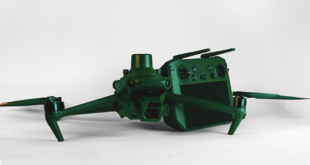A quartet of U.S. federal agencies and departments issued an interagency advisory earlier this month regarding the use of drone mitigation and detection technologies by state, local, and private entities. While the agencies—which included the FAA, the Federal Communications Commission, Department of Homeland Security, and the Justice Department—noted that the advisory was non-binding and merely meant to provide information, its underlying intent was clear: to re-affirm the primacy of the federal government when it comes to airspace and all aircraft in unambiguous language.
“As the number of drones in our airspace continues to rise, it is unsurprising that the availability of counter-drone technologies has likewise increased,” said deputy attorney general Jeffrey Rosen. “Because these technologies may be presented for sale without a full discussion of important legal requirements, this advisory steps forward to provide an outline of the relevant legal landscape.”
While admitting that authorization for drone detection and mitigation is “far from clear,” the advisory provides the following explanation: “To date, Congress has given limited authority to only four federal departments—Defense, Energy, Justice, and Homeland Security—to engage in UAS detection and mitigation activities, notwithstanding certain otherwise potentially applicable federal criminal laws. The departments and agencies issuing the advisory do not have the authority to approve non-federal public and private use of UAS detection or mitigation capabilities, nor do they conduct legal reviews of commercially available products’ compliance with those laws.”
The advisory presents a plethora of applicable federal laws that could potentially snag non-federal drone detectors. They include federal statutes prohibiting wiretapping, recording and decoding, computer fraud and abuse, airspace and communication interference, and statutes governing airports, airport security, and radio frequencies. State and local authorities are urged to “take the advice presented in this advisory seriously—to consult with counsel and think carefully about the functionality of individual detection or mitigation systems, the way the system operates, and the way the system will be used.”
 Unmanned Aerial Vehicle The latest drone news
Unmanned Aerial Vehicle The latest drone news


